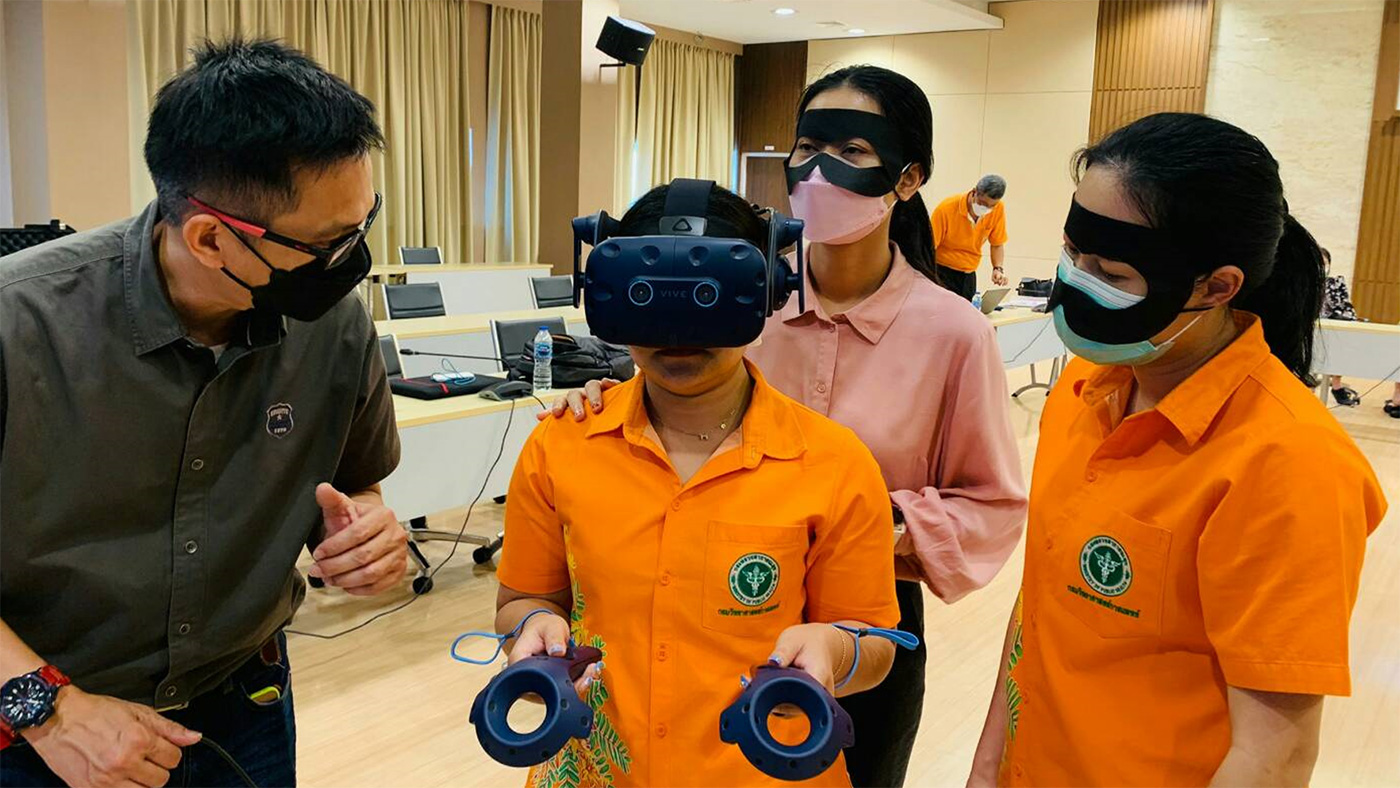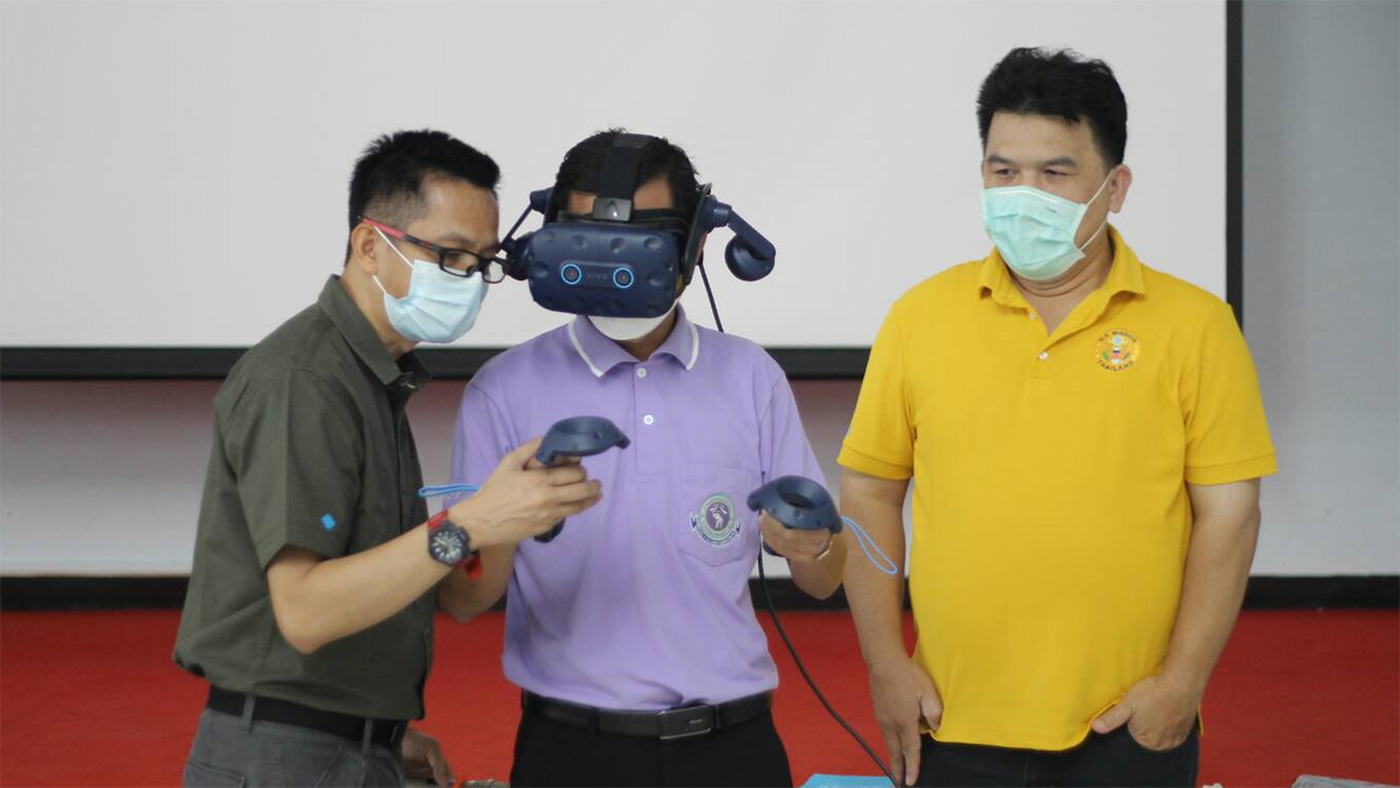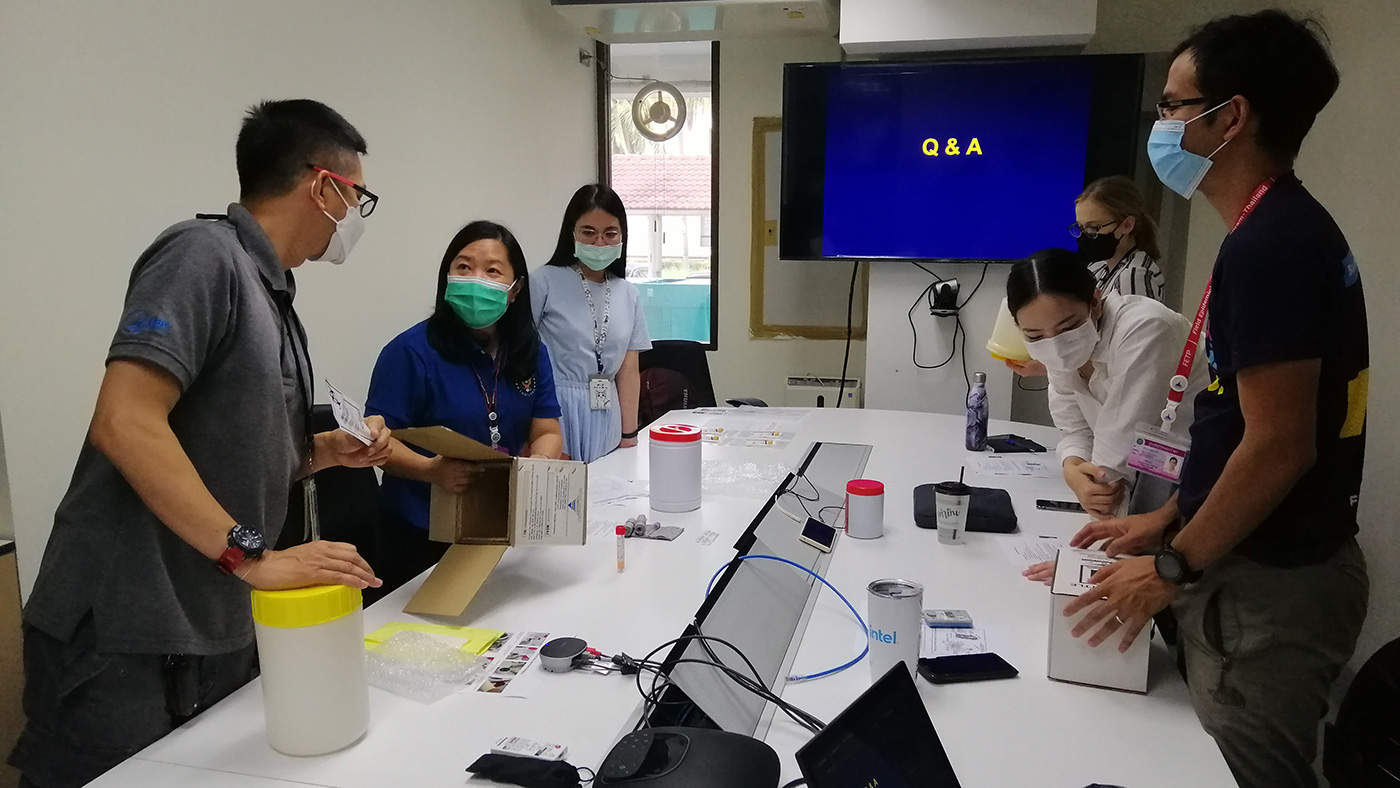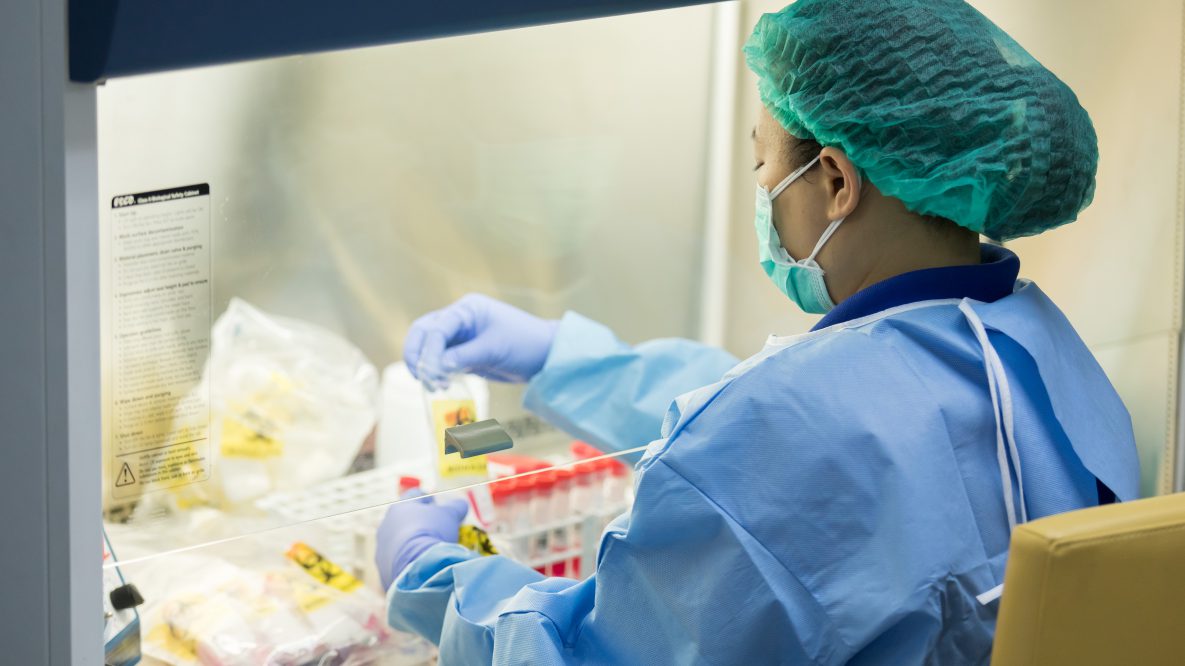Thailand and CDC strengthen laboratory capacity to respond to COVID-19
Summary
- The Centers for Disease Control and Prevention (CDC) has collaborated with Thailand’s Ministry of Public Health (MOPH) since 1980 to prevent and control infectious diseases.
- CDC and the MOHP trained the laboratory workforce in innovative ways, such as using virtual reality.

CDC Thailand enhances workforce capacity of the Ministry of Public Health COVID-19 laboratory to help with pandemic response. Photo credit: Perayut Kantachompu/MOPH

When in-person trainings were suspended, CDC developed Virtual Reality (VR) Biosafety Cabinet (BSC) training modules and field tested them in Thailand. Photo credit: Ratigorn Guntapong/MOPH

CDC Drs. Anek Kaewpan and Apiwat Lapamnouysap, work with Thai scientists to evaluate these innovative modules. Photo credit: Dr. Ponrut Phunpae/MOPH

CDC Thailand Field Epidemiology Training Program (FETP) residents learn best practices for safely packaging COVID-19 samples and transporting them to laboratories for testing. Photo credit: Waraporn Ubonphen/CDC

Public Health Workers who handle specimens that might contain germs (like the virus that causes COVID-19) need to be fit tested for N-95 masks to help achieve maximum protection against getting sick from exposure. Photo credit: Nilubon Sirisophon/CDC

In addition to their personal protection, laboratory technicians ensure the safe handling of samples containing biological material such as SARS-CoV-2, the virus that causes COVID-19. A Biosafety Cabinet (BSC) uses forced air and a high efficiency particulate air filter (HEPA) to create a barrier that prevents infectious material from inside the cabinet from getting into the lab. CDC Dr. Anek Kaewpan, provides training on the safe use and maintenance of a BSC. Photo credit: Apiwat Lapamnouysup/CDC

Trainees and graduates from Thailand’s Field Epidemiology Training Program (FETP) track on Emerging Infectious Diseases, spent three weeks in the CDC Thailand laboratory learning about diagnostic systems and interpretation of laboratory results for public health action. Photo credit: Waraporn Ubonphe /CDC

When samples arrive to the laboratory, Thai technicians decontaminate them and use an electronic system to track results and patient information to reduce errors associated with data collection using paper forms. Photo credit: Waraporn Ubonphe/CDC

CDC Thailand supported laboratory surge capacity to increase the number of COVID-19 samples the Ministry of Public Health tested daily. Photo credit: JT Square

The most accurate test for the virus that causes COVID-19 is the real-time reverse transcriptase polymerase chain reaction (RT-PCR) test. CDC staff member Duangkamon Siludjai sets up RT-PCR tests as part of CDC’s support to the Ministry of Public Health COVID-19 response. Since the pandemic began, CDC Thailand Laboratory has tested more than 11,800 specimens for the virus. Photo credit: JT Square

The virus that causes COVID-19 can change itself enough to be referred to as a variant, which might affect how quickly the virus spreads or how sick a person becomes. Laboratory scientists find and monitor variants using a process called next generation sequencing.
CDC Dr. Pongpun Sawatwong, analyzes sequence data. Dr. Sawatwong confirmed the first Omicron variant in Thailand in collaboration with the Thailand Ministry of Public Health. Dr Sawatwong also trains other laboratory scientists from the region to increase efforts in the study of variants (genomic surveillance). Photo credit: Dr. Thidathip Wongsurawat/MOPH